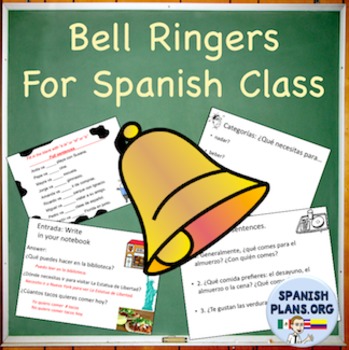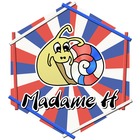Five Back to School Tips for the World Language Classroom
Okay so the summer has passed too quickly. You’re out of the house and on your way to school for the first day and as you are driving you’re wondering how you can motivate yourself to knock that list of things to do down to begin the school year off with a bang. Here are 5 Back to School Tips for teachers of World Languages.
 1. Create a Poster to Remain in the Target LanguageStart the year off strong by remaining in the target language! Recent studies have shown that students of a second language acquire it at a faster rate if immersed in the language. To help keep yourself on target and your class as well create a poster with a flag from a country where the target language is spoken as well as a caption in the target language such as, “We speak ________ here.” On the reverse side create a poster with a flag of the native language of your students with the same expression in the native tongue and with an image of the flag. Place both posters in a page protector or laminate them front to back and pin the poster at the front of the classroom. Throughout the class period if you find that you must communicate something in the native language of your students be sure to walk to the front of the room and flip your poster to the appropriate flag/language. You will find that it is easier to remain in the target language and re-explain the information than it is to walk all the way to the front of the room and reverse the poster.
1. Create a Poster to Remain in the Target LanguageStart the year off strong by remaining in the target language! Recent studies have shown that students of a second language acquire it at a faster rate if immersed in the language. To help keep yourself on target and your class as well create a poster with a flag from a country where the target language is spoken as well as a caption in the target language such as, “We speak ________ here.” On the reverse side create a poster with a flag of the native language of your students with the same expression in the native tongue and with an image of the flag. Place both posters in a page protector or laminate them front to back and pin the poster at the front of the classroom. Throughout the class period if you find that you must communicate something in the native language of your students be sure to walk to the front of the room and flip your poster to the appropriate flag/language. You will find that it is easier to remain in the target language and re-explain the information than it is to walk all the way to the front of the room and reverse the poster.2. Start the First Class Period With Content Not Rules
The first day of school is so hard on students. Not only is it difficult to rise with the alarm clock that first day, it is also excruciating to sit through the mundane roll call, ice breaker, and rules explanations that happen in every single class period. Engage your students from the moment the bell rings for class to begin by teaching them something in the target language. A favorite is going over teacher expressions by having the students act based on commands that are spoken. This is also active and allows them to get out of their seats and move around the room. Assign reading the syllabus for the first night’s homework and go over the rules and expectations on the second day of class.
3. Design a Seating Chart That Supports the Diversity in Your Classroom
One of the best ways to learn student names quickly is by doing some research on them before they come to class and creating a seating chart that supports the diversity in your classroom. Upon receiving the roster for your classes take some extra time to find out more information about each student you will teach. Print out a copy of the roster and make notes based on the age, sex, ethnicity, and current ranking of each student. Then use this information to map out a seating chart. Once finished double check to ensure the following:
- ·Boys and girls are distributed evenly throughout the room
- Students with lower rankings are seated next to those with higher rankings so they can ask questions and receive support during times when you are helping another student or taking care of administrative tasks
- If your class has students of multiple age ranges be sure that these are also evenly distributed
- Attach post it notes to each desk in your room and add the names to desks based on your seating charts. To show separate class periods simply mark 1. Student Name 2. Student Name, etc. As students enter on the first day tell them in the target language to find their name and that is their seat.
The first day of class is also a time to pass out multiple sheets of paper. Get ahead of the game and have all of the papers each student needs printed out and paper clipped together. Hand each student a packet as s/he enters the room. This will save several minutes of time that it used to take to pass out each page individually. It will also save you energy.

5. Start Your Class Period Off with a Bell Ringer
Starting class with a warm-up or bell ringer activity allows you time to complete administrative tasks such as taking attendance, checking homework, redistributing completed homework and class work at the same time as your students gather their thoughts and think about the target language. Ideally, bell ringers should include
information that was covered in the previous class period; however, for the first day of class it can be used as a time for students to make 3 goals they wish to meet this semester in your class.
 This post written by Madame-H. Visit her store at http://www.teacherspayteachers.com/Store/Madame-H
This post written by Madame-H. Visit her store at http://www.teacherspayteachers.com/Store/Madame-H

No comments:
Post a Comment
Note: Only a member of this blog may post a comment.